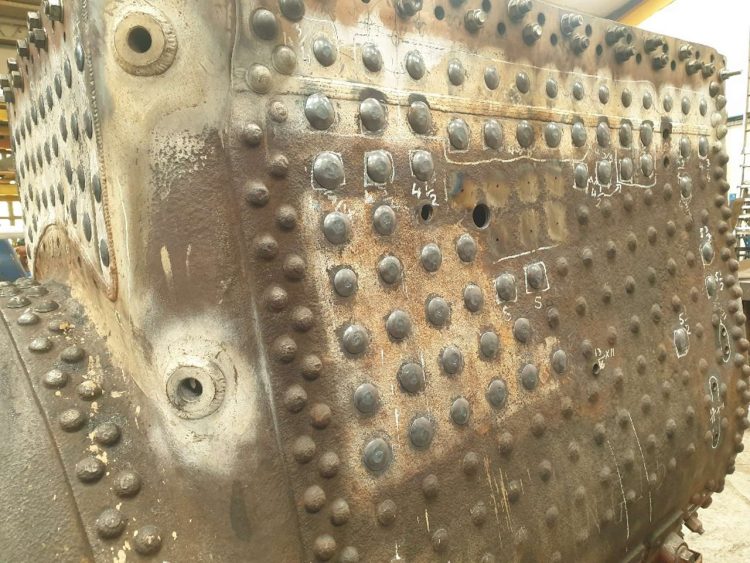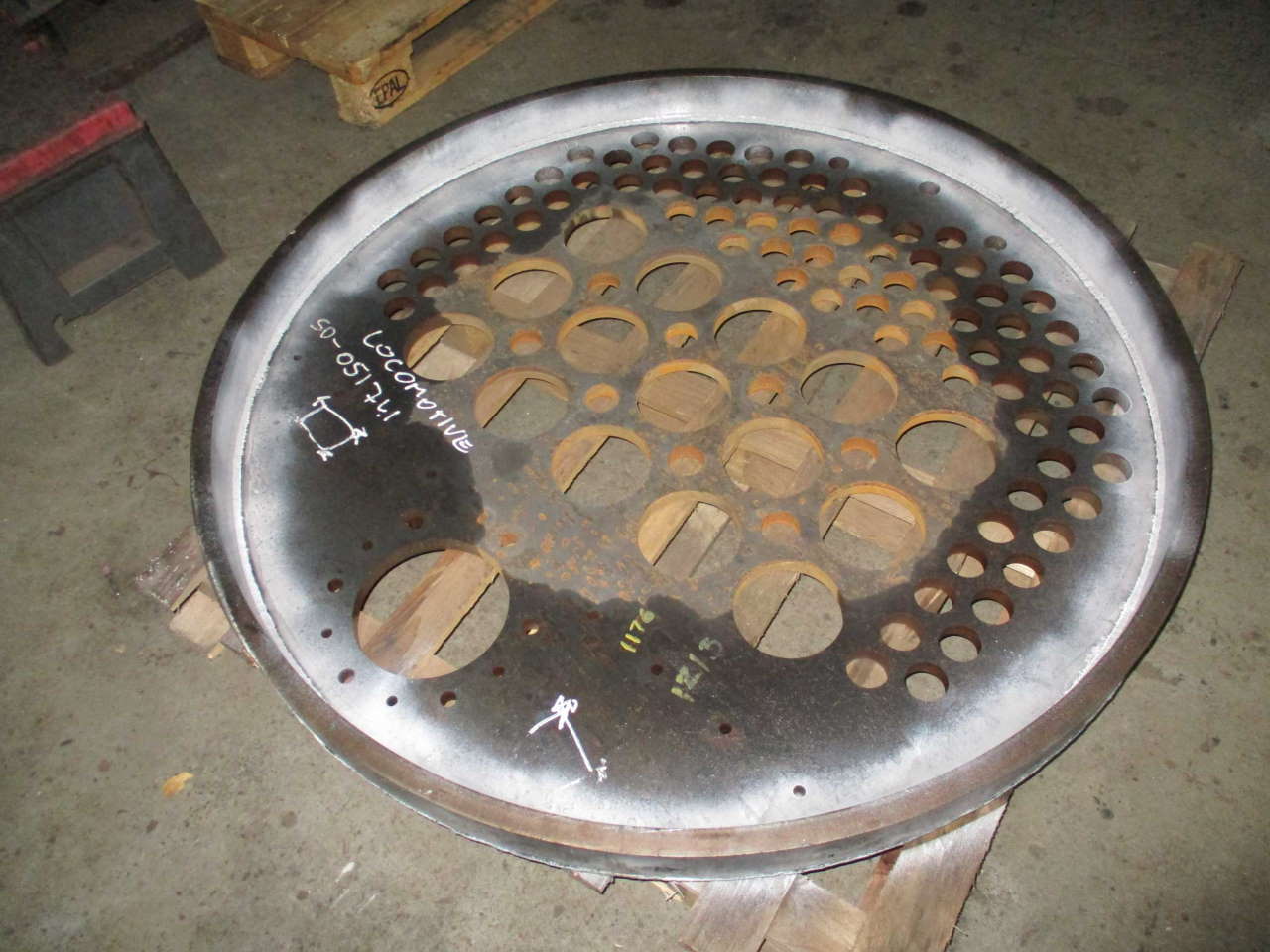The Welsh Highland Railway Society has issued the latest update on restoring to service the former South African Railways’ NG15 class narrow-gauge locomotive No.134.
The boiler is usually the largest and most expensive part of the loco’s restoration and is being overhauled at Locomotive Maintenance Services (LMS) in Loughborough, where it has been since the end of 2018.
In early-2021, the boiler’s condition was assessed and a plan of work was agreed upon between the boiler inspector, LMS, and the Ffestiniog & Welsh Highland Railway.
Since then work on the boiler has progressed at a steady pace, and has involved:
- removal and repair of the foundation ring;
- removal of various sections of wasted platework around the firebox;
- building-up of those areas of platework that were less wasted.
The loco was withdrawn in South Africa because a problem with the boiler kept putting the fire out. During this work, the reason for that became apparent when it was found that there was quite considerable wastage to the firebox inner on one side at the foundation ring, due to leakage behind the support casting; these have now been replaced.
The following photographs show the new platework around the firebox and all but a few of the stays now fitted.


A new smokebox, tubeplate, and front section of the boiler barrel are required. These are ready and waiting, and the next stage will be to fit them.
The rest of the loco is progressing well at Dinas, and the frames are very close to being ready for when the boiler arrives.
The tender frames have progressed to the stage where various changes are needed to the front and rear drag-boxes to repair wastage and to take a standard Ffestiniog and Welsh Highland coupling at the rear and for changes needed to the cab/tender interface at the front.
The new tender body, which was built a good few years ago, currently resides on 133’s frames but will be transferred to 134 at the end of May.
2022 will be a busy year for the project, and it would welcome donations towards its progress, which can be made here.





Responses
Another loco completely inappropriate for the line! Shame the money isn’t being spent on overhauling the Earl of Merioneth or a replica of Moel Tryfan. The Ffestiniog and Welsh Highland management seem to be obsessed with recreating apartheid era South African narrow gauge rather than preserving the character of the Welsh Highland Railway
To make the railway pay its way it needs large numbers of passengers which means large trains requiring big locos to pull them. An Emgland engine, with two coaches is going to produce the same resut as in the 1930s – too little money from too few passengers. Moel Tryfan was known as being a difficult engine as due to the NWNGR being laid with light rail, the loco had to have the weight spread over 6 driving wheels which meant that it was prone to slipping. A Taliesin type 0-4-4T is a much better type if you want a Single Fairlie, but still unable to pull the size of train required to carry the number of people needed to bring in the money required to maintain a very long line.
Small trains just don’t add up and there are no large Welsh locos capable of doing the job, a FR double engine is enough, where else are there any large locos available?
Nonsense! Moel Tryfan was never know for slipping, you’re making that one up! The Baldwin (590) was known for slipping not Moel Tryfan. The extra driving wheels give more traction (more friction) not less. It was more powerful than Taliesin and rode much better. It was popular with the crews and was the only engine that regularly worked the whole system from Dinas to Blaenau.
They simply don’t have enough passengers to justify big trains or big engines. The running costs of the Garratts or this thing are absolutely ridiculous. They would be much better off using a double Fairlie for 7 car trains on the line rather than running 9 car half empty trains pulled by something that eats as much coal as a Bulleid Pacific!
It’s my understanding that this loco is being overhauled/funded by a private group. If they wish to run on the WHR then they will have to satisfy the requirements of the parent company.